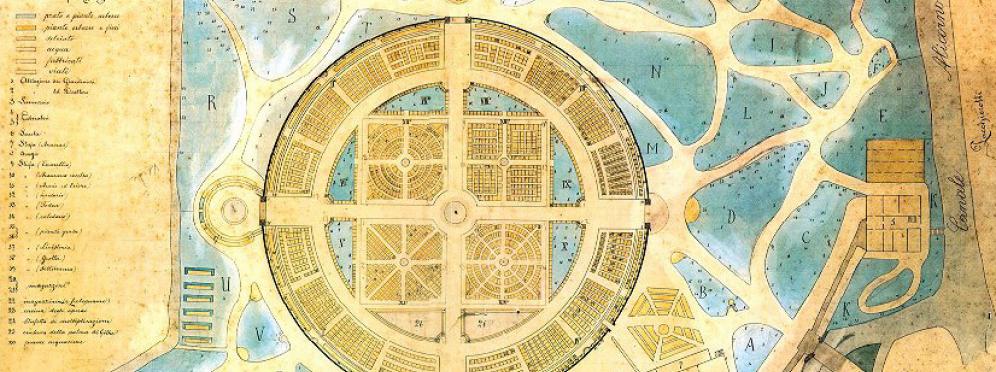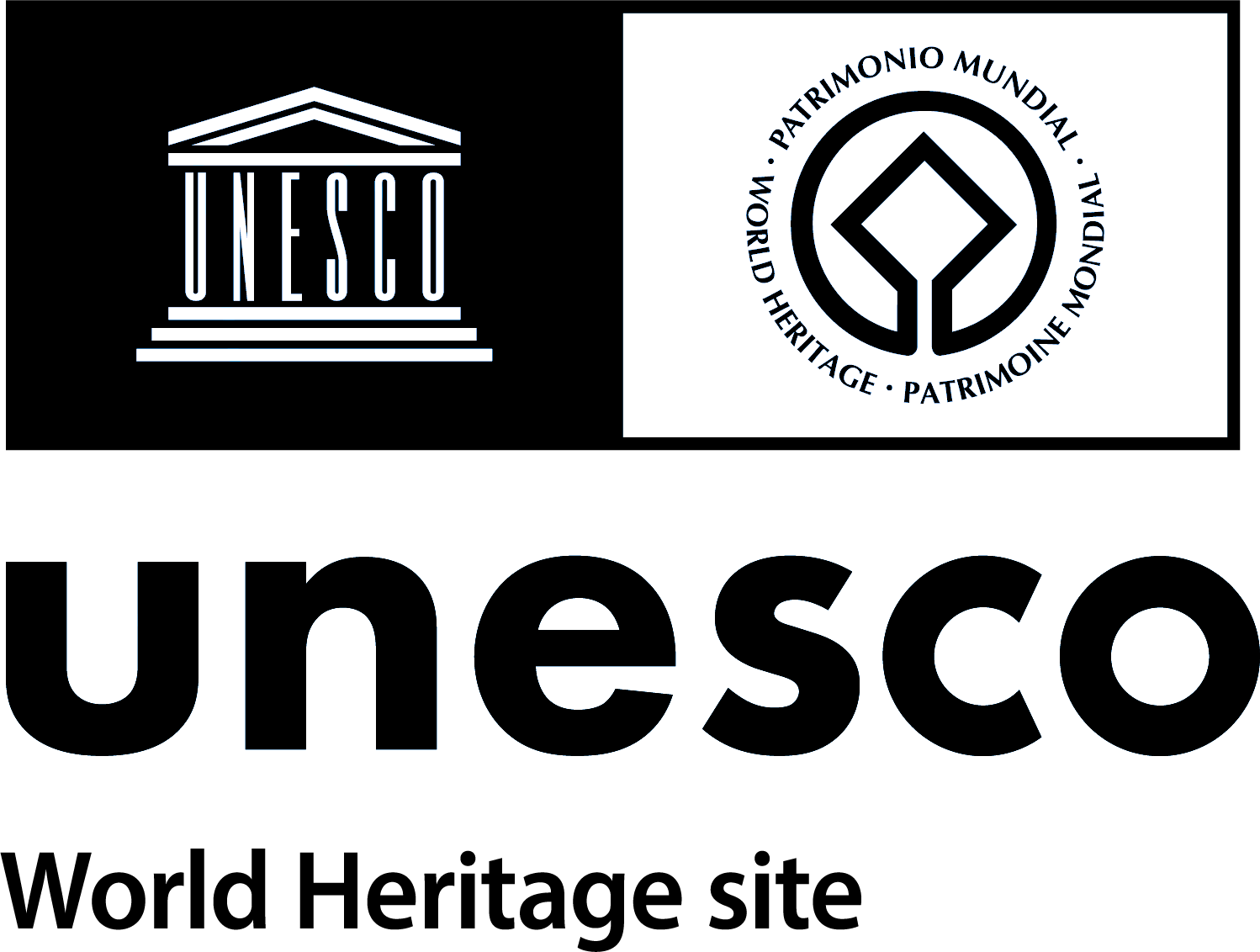Architecture 1545
Although the person who designed the Horto medicinale is unknown, the architect Andrea Moroni from Bergamo was certainly involved in its construction. The trapezoidal shape of the plot influenced the design of the Garden, which was drawn as a square within a circle, divided into four smaller squares by two main intersecting paths.

Although the person who designed the Horto medicinale is unknown, the architect Andrea Moroni from Bergamo was certainly involved in its construction. The trapezoidal shape of the plot influenced the design of the Garden, which was drawn as a square within a circle, divided into four smaller squares by two main intersecting paths. The four squares, called "quarters", or "tiers" because they were originally about 70 centimetres higher than the paths, were divided into flowerbeds (areole), which were arranged to form a series of completely different elegant geometrical patterns. In 1552 an enclosing wall was built to prevent frequent night robberies of the precious medicinal plants of the Garden.
Later the architectural structure of the Garden changed, but the original configuration was maintained. In the early 1700s, the four large gates of the Hortus cintus were built with trachyte jambs surmounted by stone vases (acroteria) containing wrought-iron plants and enclosed by elegant iron gates. The step, previously existing between the paths and the "tiers", was levelled, and the design of the flowerbeds was also changed. A fountain was built in the middle of each quarter, and another one where the two main paths intersect.
In the first half of the 18th century, the circular wall was improved by adding a balustrade with fine white stone columns, vases, and busts of well-known people facing the centre of the Garden. In later years, the Garden expanded outside the circular wall, and new fountains were added: one called the Fountain of Theophrastus, because it contains a statue of the Greek philosopher (3rd century B.C.) who is considered the father of Botany (South Gate), and another one called The Four Seasons (East Gate) because it contains the 18th-century marble busts of the Four Seasons, along with a statue of Solomon, by the Paduan sculptor Giovanni Bonazza.
In the first half of the 19th century a cubic, a spherical, and a cylindrical sundial, were built. Masonry greenhouses were built to replace the previously mobile greenhouses; one of these 19th-century models still preserves its original internal structure, with elegant arches and cast-iron columns. A semicircular classroom, called "botanical theatre" and holding 100 students, was built and is still in use. Busts of famous scholars were placed on its cornice: Francesco Bonafede, patron of the Horto medicinale, at the centre, surrounded by Joseph Pitton de Tournefort, Karl Linnaeus, Bernard de Jussieu and Marcello Malpighi.
In the past, the large building near the entrance (17th-18th century) was the house of the Garden's director (called Prefect). Today, it hosts exhibitions on the ground floor, an historical library, the archives of the Botanical Garden and the Herbarium on the first floor. The second floor houses administrative offices and rooms for the preservation of seeds.






